Native Species
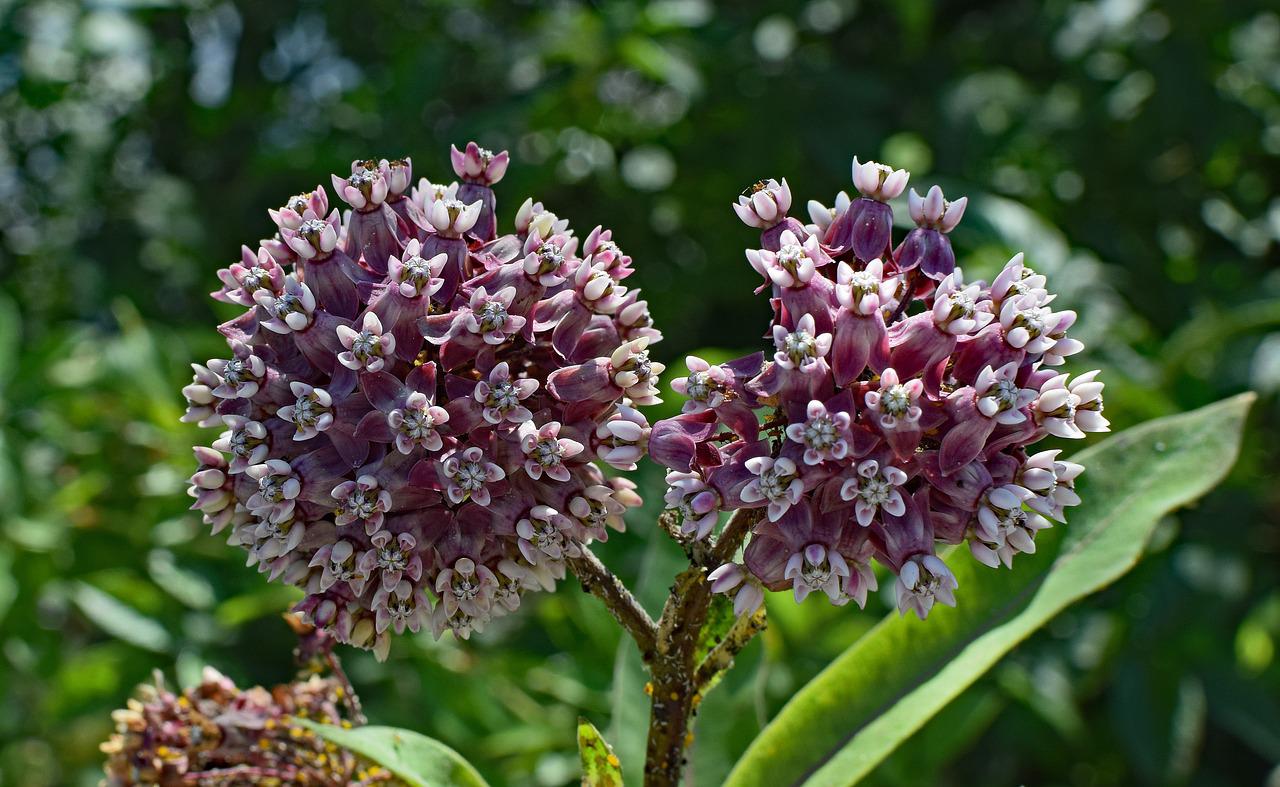
Why are Native Species Important?
Native plant and animal species are important for many different reasons. Native plants help with stabilizing soil, purifying air, filtering water, and, most importantly, supporting native wildlife populations. Native plants also have a significant impact on decreasing flooding and droughts, as well as mitigating extreme temperatures. Native plant species have developed over hundreds or thousands of years in a particular region or ecosystem. Planting natives helps conserve biodiversity, provides food and shelter specifically for native wildlife. Once established, native plants will thrive in their natural environment and require little to no maintenance.
Long Island is home to many types of plants and animals, all competing for food and space to grow.
Native Species Fun Facts
- Many species of native plants are edible (ex., Raspberries, Blueberries, and Strawberries)
- Most butterflies rely on specific native plant species to lay their eggs (ex. Monarch butterflies and milkweed: Monarch caterpillars exclusively feed on milkweed, a native plant, which provides them with the necessary nutrients to develop into adult butterflies.
- Native plants require little to no watering once established in a home garden.
- Many natives can be planted as ornamental trees (ex., Inkberry, Redbud, and Dogwood)
- Native plants are better suited to our hot and humid summer weather.
- Little to no fertilizer is required for planting natives as they are already adapted to local soil conditions.
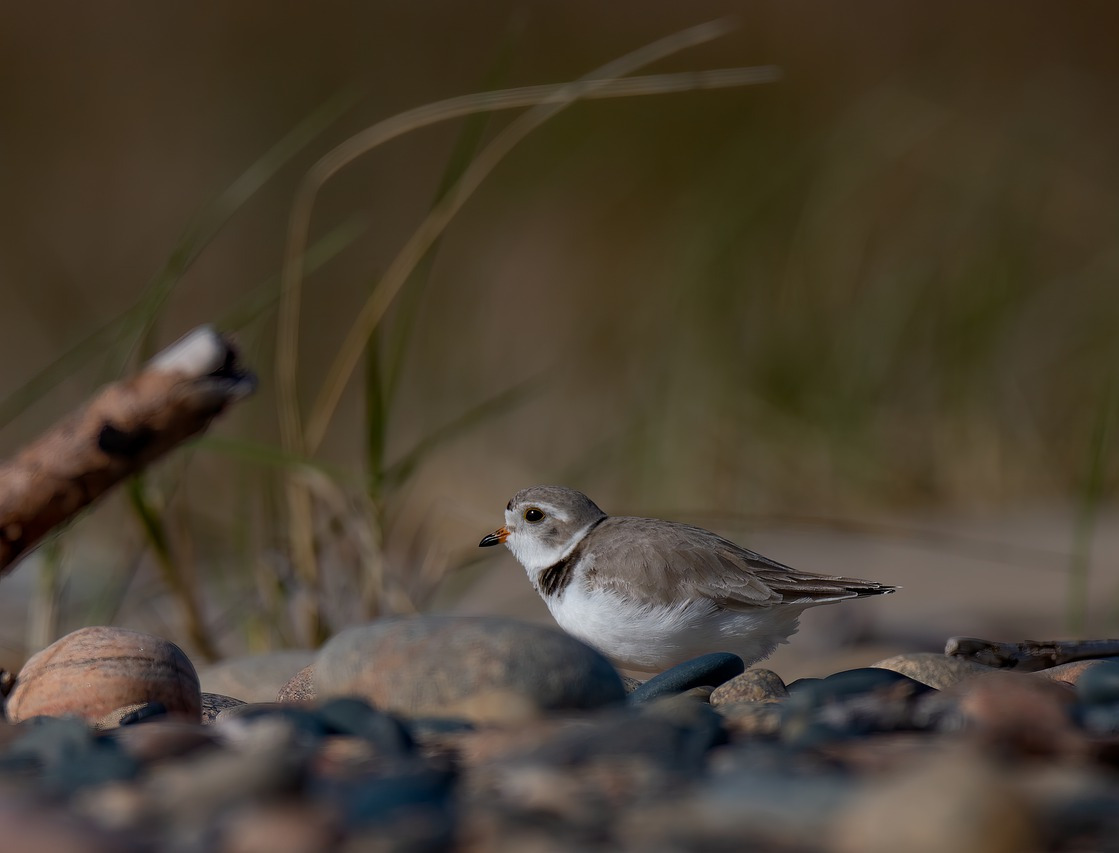
Tips for attracting Native Birds
Click the images below to enlarge
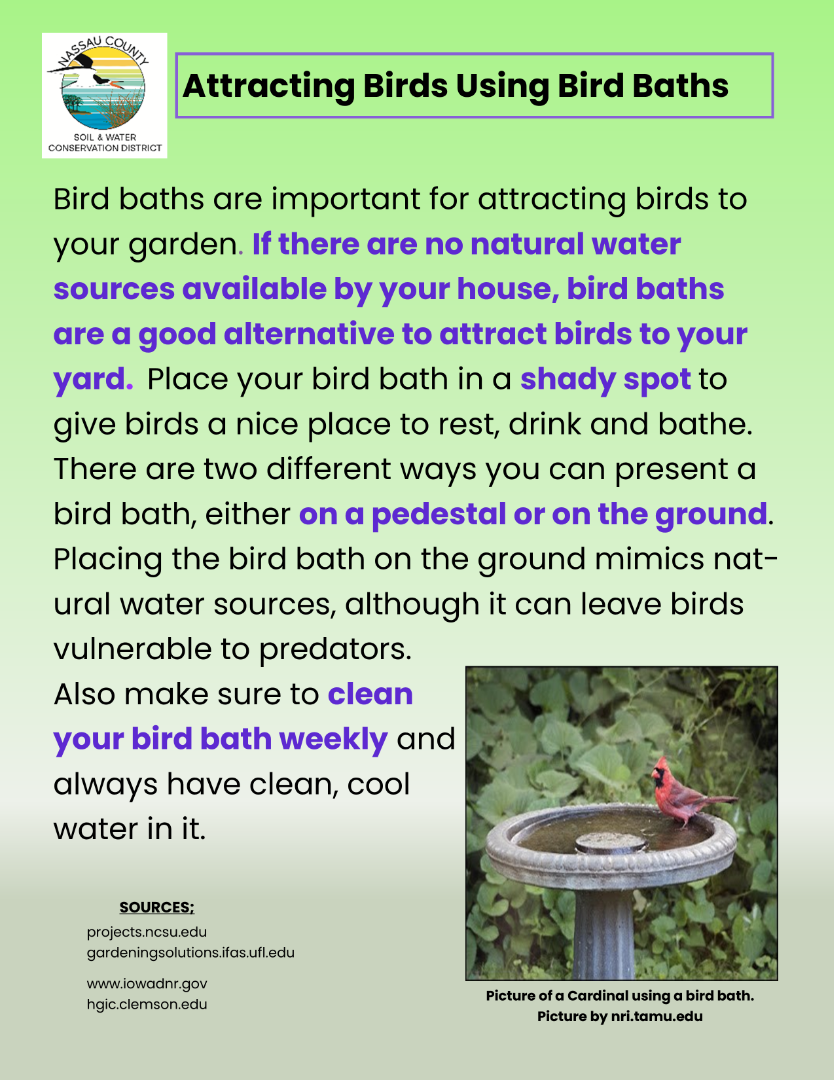
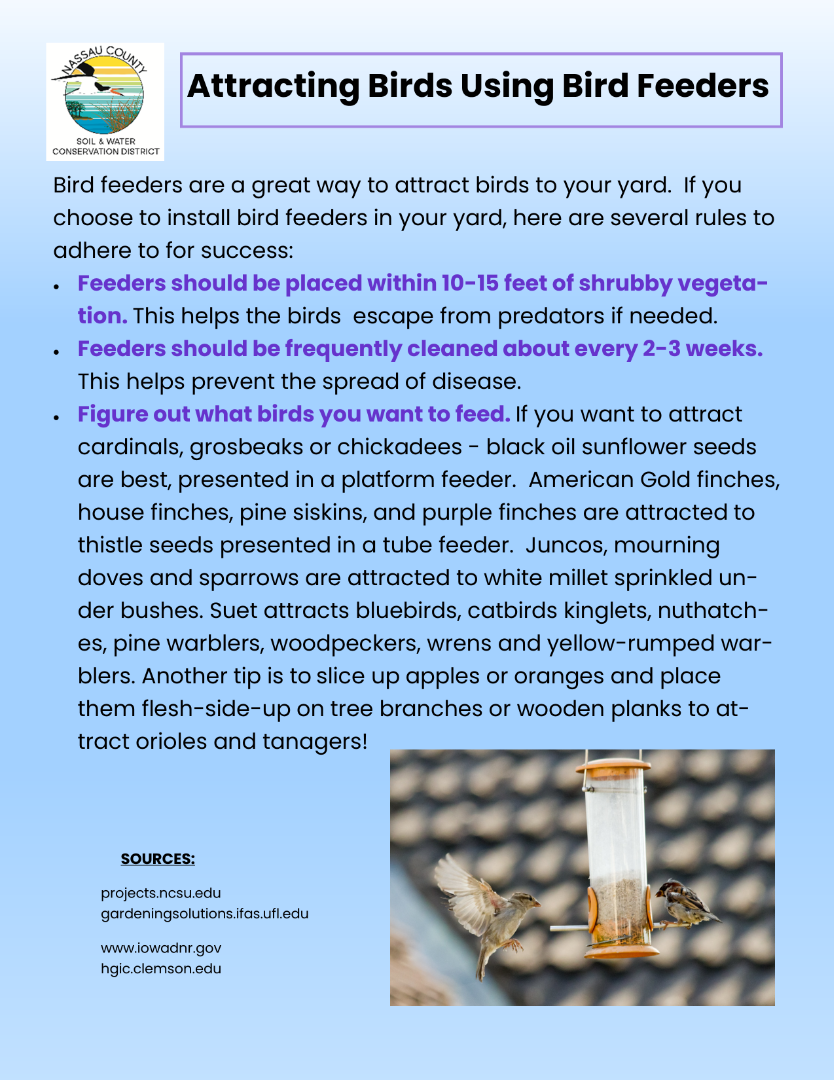


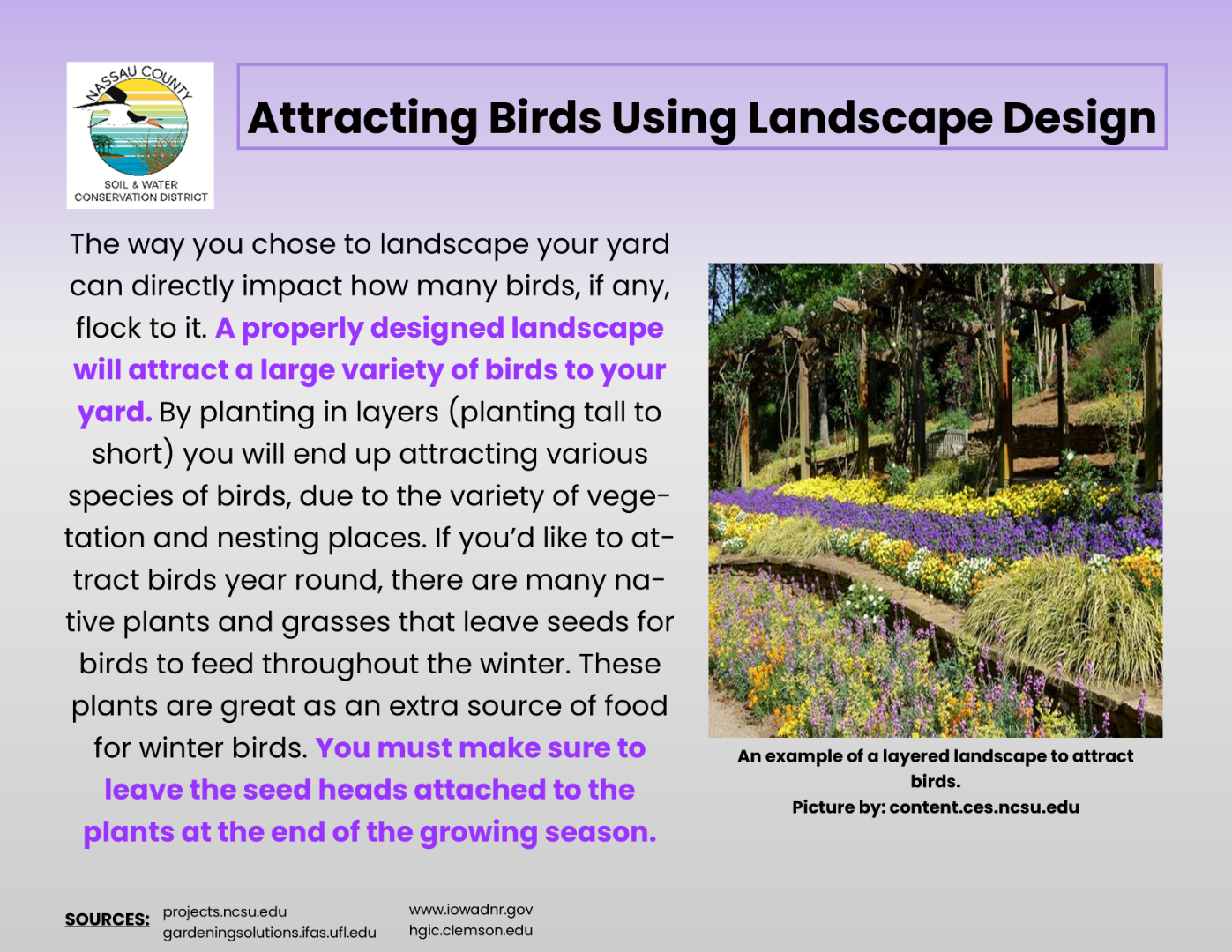
Native Plant Resources and Databases
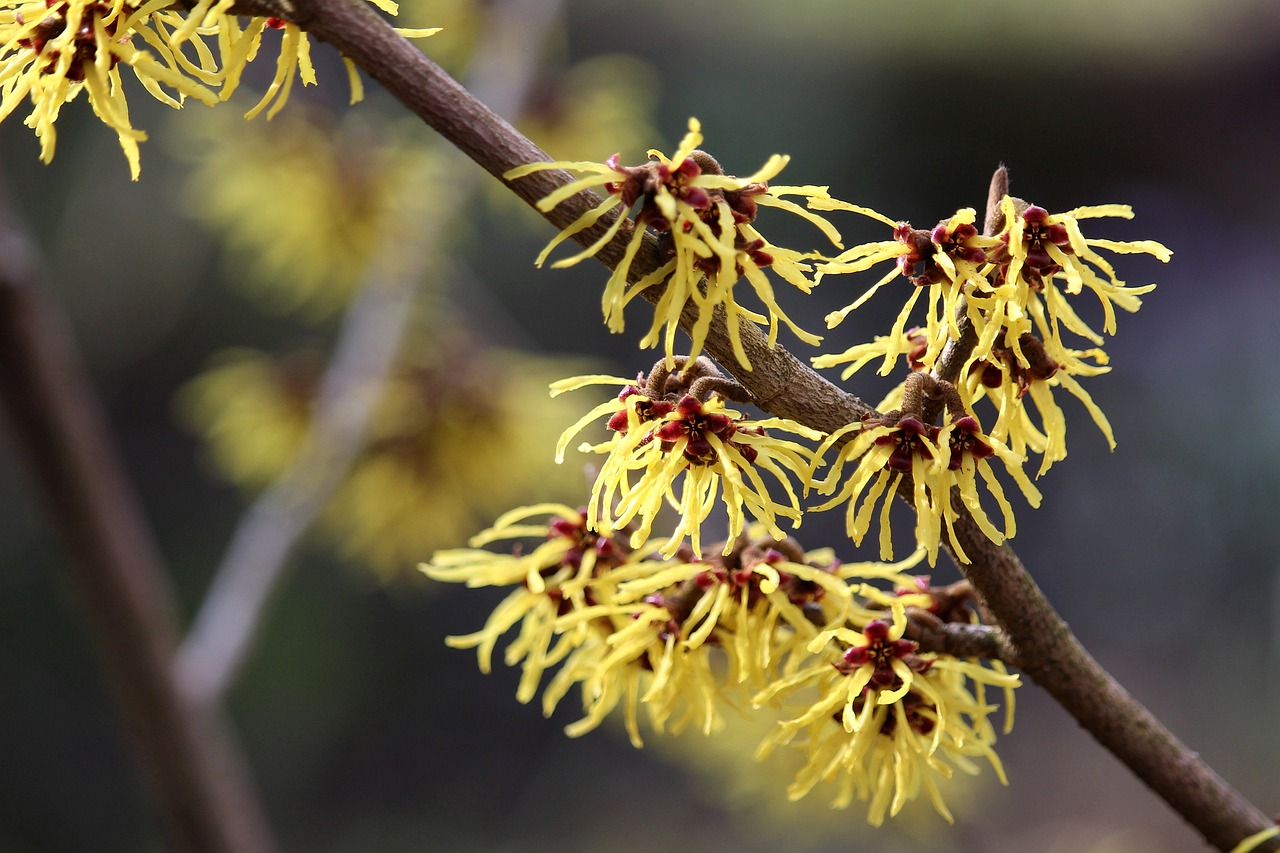
American Witchazel - Hamamelis virginiana L.
How can you help?
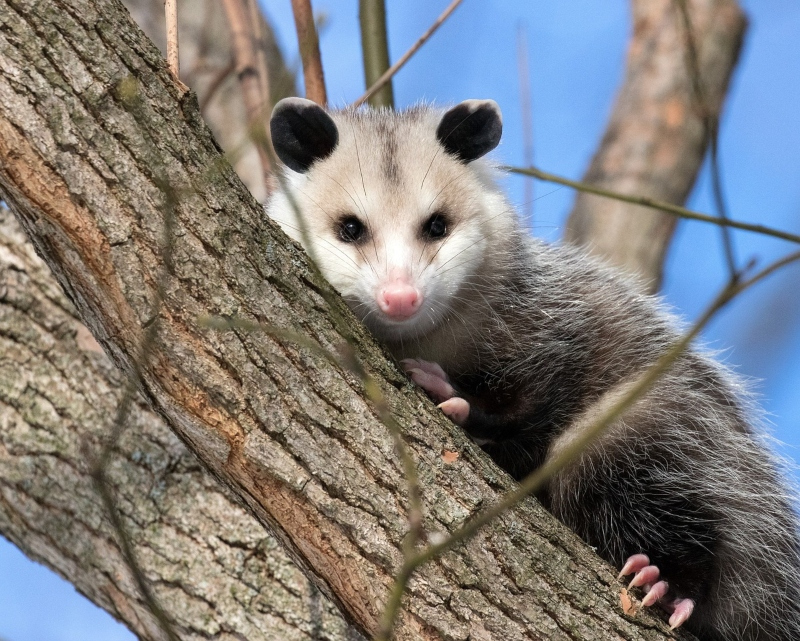
Opossums are North America's only native marsupial, They are rarely seen because they are nocturnal. The size of a cat with grey fur, opossums are far from a nuisance, eating small fruits, snails, and insects like ticks. Many people think opossums have rabies because they drool when scared. It is extremely rare, or even impossible, for opossums to get rabies, because their body temperature is too low for the rabies virus to survive and replicate well.
Click here to Learn more about Opossums from Operation WildLife
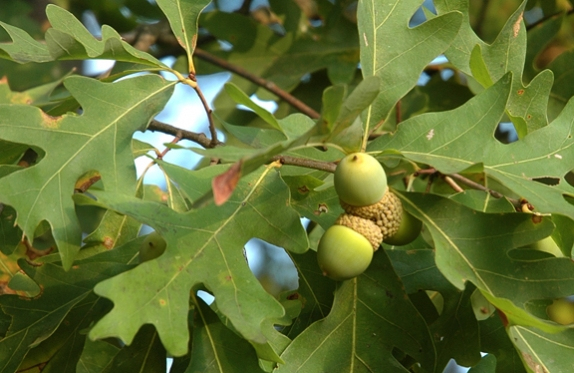
White Oak Quercus alba
Acorns are a valuable source of wildlife food. More than 180 different kinds of birds and mammals use oak acorns as food; among them are squirrels, blue jays, crows, red-headed woodpeckers, deer, turkey, quail, mice, chipmunks, ducks, and raccoons. White oak twigs and foliage are browsed by deer, especially in clearcuts less than 6 years old. White oak is sometimes planted as an ornamental tree because of its broad, round crown, dense foliage, and purplish-red to violet-purple fall coloration.
